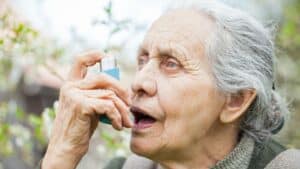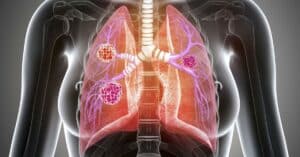With so many treatment options available, it can be challenging to figure out which options are best for you. For someone with lung disease, the pressure of living with a chronic condition while trying to find the right treatments can be overwhelming.
Some of the current treatments available for people with lung disease include pulmonary rehabilitation, medications, and at times, lung transplant.
However, combining alternative and traditional treatments can help improve a patient’s quality of life. Some of the alternative treatment options include acupuncture and even chiropractic care for lung disease.
What is chiropractic care?
According to the American Chiropractic Association, chiropractic is a health care profession which focuses on the musculoskeletal system, the nervous system, and how disorders in these systems effect general health.
Doctors of Chiropractic or chiropractors generally practice a drug-free, hands-on approach to health care which includes patient examination, diagnosis and treatment.
Many chiropractors use the whole health approach in patient care. Spinal manipulation is the most common therapeutic procedure performed by chiropractors. Physicians and chiropractors are generally part of a team of clinicians to help patients.
Chiropractors may combine spinal manipulations and other manual therapies with other approaches, such as heat and ice, relaxation techniques, rehabilitative and general exercise, and counseling about lifestyle, diet and dietary supplements.
Why try chiropractic care for lung disease?
Because chiropractors can combine chiropractic adjustments with other therapies, they can help patients improve their quality of life.
Chiropractic care benefits people with neck pain, back pain, headaches, and other conditions, while helping people maintain a better quality of life. Currently chiropractic studies are being performed to see what role chiropractic plays in treating patients with lung disease.
In a study of fifteen patients with moderate COPD, five received soft tissue therapy, five received soft tissue therapy plus spinal manipulation, and the remaining five received soft tissue therapy, manipulation and exercise.
Lung function was measured before treatment began and then again after four weeks of treatment. Of the patients studied, those who received manipulations had less gasping for breath, and those in the group that received all three treatments had better lung capacity and could walk longer distances.
Because chest wall impairment is a contributing factor in the prognosis of COPD, reducing this impairment could improve a patient’s prognosis.
Both spinal manipulation and soft tissue therapy can increase joint mobility and decrease muscle tension. It is thought that applying these techniques to the chest wall in someone with COPD could reduce chest wall rigidity, making it easier to breathe.
Trying alternative therapies
Traditional treatment options used in combination with chiropractic care, acupuncture and other alternative treatments can help improve the quality of life for people with chronic lung disease.
Always consult with your doctor on finding the best treatment plan for you.

Christine Kingsley, APRN is the Health and Wellness Director at the Lung Institute where she focuses on providing helpful online resources for people looking for information on various lung diseases, breathing exercises, and healthy lifestyle choices. She advocates for holistic care that involves working with your doctor to explore all options including traditional and alternative care while focusing on diet and exercise as proactive measures.









